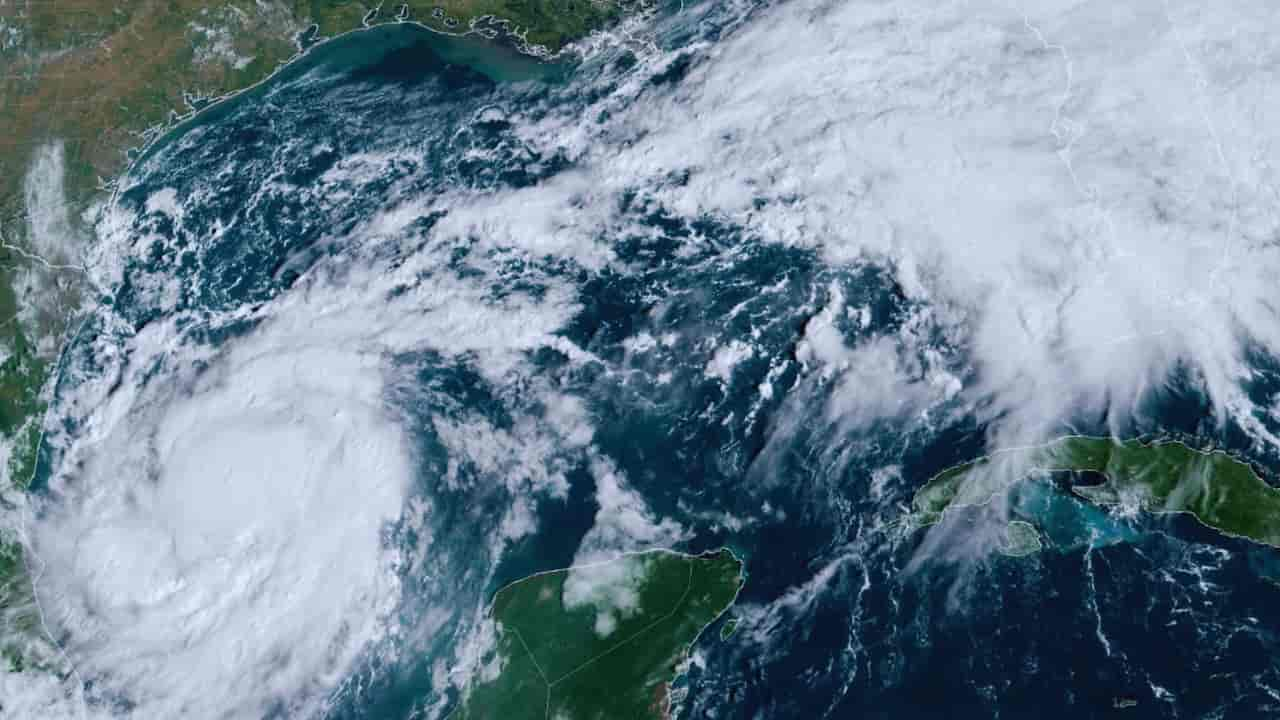Hurricane Milton: Florida Braces for Historic Storm as Evacuation Calls Intensify
As a news reporter, I’m bringing you the latest updates on Hurricane Milton, a powerful storm barreling towards Florida’s west coast. The situation is rapidly evolving, and residents face what officials call “the 11th hour” for evacuation.
Hurricane Milton, now a Category 4 storm, is expected to land late Wednesday night or early Thursday morning. Despite a slight weakening, the National Hurricane Center (NHC) warns this could be one of the most destructive hurricanes ever to hit west-central Florida.
The storm’s approach has triggered urgent pleas from top government officials. President Joe Biden called it potentially “the worst storm to hit Florida in over a century,” urging residents in Milton’s path to “evacuate now.”
Vice President Kamala Harris echoed this sentiment on a late-night talk show, stressing that even the toughest Floridians shouldn’t try to ride out this storm.
As of 5 AM local time, Milton was packing winds of 160 mph and was located about 300 miles southwest of Tampa. It’s moving northeast at 14 mph, with its outer bands already affecting parts of Florida. When it hits land, the NHC predicts Milton will have winds near 130 mph.
The threats from Milton are numerous and severe. Residents face risks from catastrophic winds, heavy rainfall of up to 18 inches in some areas, and a potentially deadly storm surge that could reach 15 feet in the hardest-hit locations.
Local officials are ramping up their warnings. Hillsborough County Sheriff Chad Chronister told CNN, “This is the 11th hour. If you’re in an evacuation zone, the time to get out is now.” The message is clear: your safety is more important than your property.
As one official said, “We can replace your home; we can’t replace your life.”
For those wondering about the science behind Milton’s power, it’s worth noting that hurricanes are ranked on a scale from Category 1 to 5 based on their sustained wind speeds. Milton’s current Category 4 status indicates a dangerous storm capable of causing catastrophic damage.
The storm’s path is being closely tracked. After making landfall on Florida’s west-central coast, Milton is expected to move across the state, exiting off the east coast of Florida on Thursday afternoon. This trajectory puts a large portion of the state at risk.
Preparation efforts are in full swing across Florida. Emergency shelters are opening, and coastal areas are being evacuated. Residents who choose to stay are advised to stock up on essentials and prepare for power outages that could last for days.
Milton’s potential economic impact is also a significant concern. Florida’s tourism industry, a vital driver of the state’s economy, could face significant disruptions. Additionally, the storm could affect agriculture, particularly citrus crops, which are essential to the state.
As Milton approaches, meteorologists work around the clock to provide accurate forecasts. The NHC uses advanced computer models and data from hurricane hunter aircraft to track the storm’s path and intensity. These brave pilots flew through Milton’s eye, experiencing severe turbulence to gather crucial data.
It’s important to note that even as Milton weakens slightly, it remains a difficult storm. The NHC stresses that a slight change in the storm’s intensity should not lead to a false sense of security. The potential for life-threatening conditions remains high.
Community resilience is key in times like these. Floridians are known for their ability to come together during natural disasters. Local organizations and volunteers are mobilizing to assist with evacuations and prepare for the aftermath.
As we continue to monitor Hurricane Milton, residents are urged to stay informed through local news and official channels. Follow evacuation orders, prepare emergency kits, and prioritize your safety. Remember, as officials keep emphasizing, no property is worth risking your life.
This is a developing story; we’ll keep you updated as new information becomes available. Stay safe, Florida.
